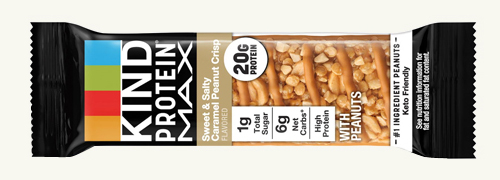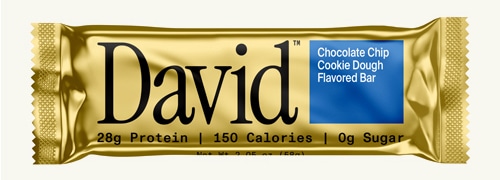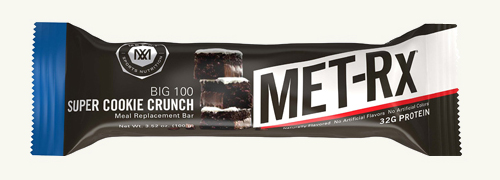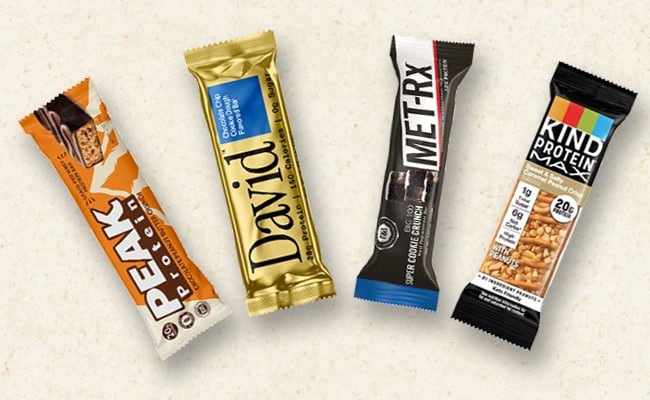You know that getting enough protein in your diet is essential, as this macronutrient provides the building blocks for muscle, tissue repair, enzyme and hormone production, and overall cellular function. Protein supports your overall strength and health, and most people will do well to get at least 0.8 grams of protein per pound of body weight.
However, you also know that in our busy, modern, on-the-go world, it can be difficult to achieve this goal.
Enter the ever-handy protein bar.
Sure, it’s best to eat whole foods, but it’s not always possible to grill chicken breasts and serve them up. Protein bars are an easy way to supplement your diet and meet your protein goals each day.
Protein bars used to be thought of by the average joe as chalky and bland and by nutritionists as essentially fortified candy. But very few contain much actual sugar these days, and their taste and texture have improved greatly. They have come a long way in the past two decades, and many now boast good flavors and nutritional profiles.
But all are certainly not created equal.
We’re big fans of protein bars here, and we’re real protein bar connoisseurs. We’ve tried almost everything.
There were many failures.
Quest bars seem to have a lot of fans, but even as people who don’t mind the taste of stevia, we found them so awful they’re almost inedible.
The ONE bars were our favorite. But then Hershey’s bought the company and introduced a “new and improved taste and texture” anything but.
Kirkland bars are cheap, Barebell bars are pretty tasty, but both contain sugar alcohols that can make you gassy and bloated.
We’ve found some good ones over time, though (interestingly, almost all of the ones we’ll recommend below were introduced fairly recently, a sign that the market continues to evolve). Our criteria for a good bar includes the intersection of several factors:
- good nutritional profile (high protein and fiber, low sugar)
- relatively “clean” (quality protein source, low/no calorie natural sweeteners, minimal unwanted ingredients and fillers)
- without sugar alcohols
- elegance
- satisfying
Here are four that we found meet that criteria and are our top picks:
These are in many ways the pinnacle of protein bars. Avoiding palm oil, sugar alcohols and artificial sweeteners, Peak Protein Bars are made with grass-fed whey, real organic chocolate, lone fruit and a good amount of fiber and may be the cleanest and tastiest bars out there. A few downsides though: At nearly $3.50 each, these are some of the most expensive bars on the market. you will always pay for high quality materials. The protein to calorie ratio is a bit low (290 calories, 20 grams of protein). And while the real chocolate greatly enhances their flavor, it also makes the bars melt. They wouldn’t be the best for, say, hiking and if you live in a warm climate, order directly from their website instead of Amazon and have them ship your order with ice. Then refrigerate the bars when they arrive. they may be even more delicious when chilled.

If you find that whey protein doesn’t agree with you, try these bars, which are made with soy protein. (Although there is some concern out there that soy protein will decrease testosterone / increase estrogen, according to AoM podcast guest Alan Aragon, that’s not going to happen unless you’re eating over 60 grams of soy protein a day .) Reasonably priced at $2 each Kind Protein MAX bars are nut-based (the #1 ingredient is peanuts), sweetened with allylose, and have a taste and texture a little like a granola bar.

Backed by health guru Peter Attia, the newest bar on the block has become very popular. Does it live up to the hype? Mostly, with some caveats. First the good: The macronutrient profile is killer. They only have 2 grams of fiber, but with zero sugar and a ton of protein, they’re pretty filling. And the calorie to protein ratio is incredible: 150 calories and 28 grams of protein. While people have expressed some concern that some of that protein comes from collagen, which lacks the muscle-building amino acids, the other protein sources in the bar (milk, whey, egg white) make up for it and give the bar a higher possible 1.0 PDCAAS scorewhich means it provides 100% or more of the amino acids required in the diet. The taste of the bars is decent – quite palatable, but not delicious (this might be a pro for people who don’t like their bars so good they’re tempted to eat more than one).
A few concerns: Bars are expensive. just a hair cheaper than the Peak bars. They also contain “esterified propoxylated glycerol” (EPG), which is a modified fat molecule that provides far fewer calories than regular fat because it’s not fully absorbed by the body (this is part of how the bars reverse-lock their calories ). While studies have generally shown EPG to be safe, it can cause digestive problems in some people (we haven’t experienced any) and can reduce the absorption of fat-soluble vitamins when eaten with other foods. If you don’t like bars with ingredients that are less natural and haven’t been around for a long time, this might not be for you.

In some ways, MET-Rx bars don’t meet our criteria for a quality protein bar, being high in sugar and low in fiber. But these old school bars are worth highlighting for a few reasons. First, it’s one of the few bars these days that isn’t made with non-nutritive sweeteners of any kind, so if you’re trying to avoid them altogether, there you go. Second, they’re relatively cheap — about $2.50, which is good, especially when you consider their third advantage: they’re big mamajamas. With 410 calories and 32 grams of protein, it’s a good choice for when you’re looking for something that feels more like a meal than a snack. even without a ton of fiber, they’re still filling. And they taste good and are almost always available at gas stations and convenience stores.
